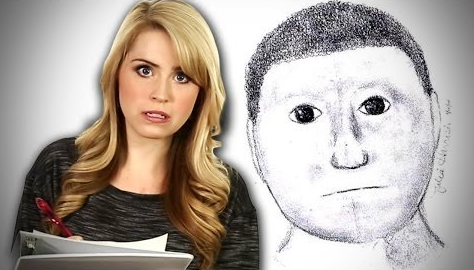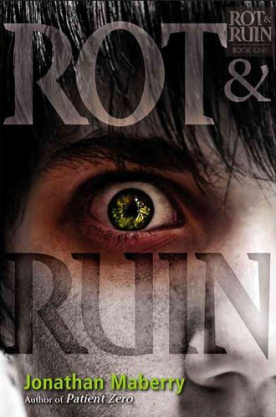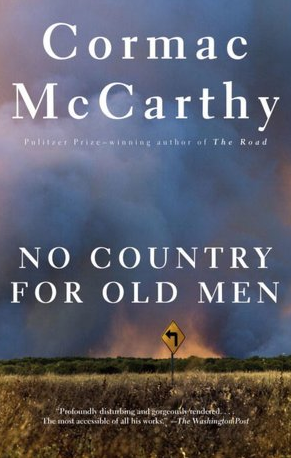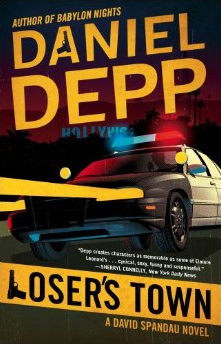Description—How to Make Readers Fall In & Never Escape

Sidewalk chalk art near Regent’s Canal in London.
Today we’re going to address a topic that—GASP—I don’t believe we’ve ever covered in almost 800 blogs. Namely because it is a tricky one to address. We’re going to talk about description. For those who never use description or very sparse description? Don’t fret. That’s just your voice. Readers like me who looooove description will probably gravitate to other books and that is OKAY.
Personally, I’m not a fan of austere modern houses with stainless steel everything and weird chairs no human could sit in and most cats would avoid, but? There are plenty of people who dig it. I also don’t like a lot of knick-knacks and clutter. Makes me want to start cleaning.
Same with books. Not too little or too much. Yeah, I’m Literary Goldilocks.
Plain fact? We can’t please everyone. Description (or lack thereof) is a component of an author’s voice. BUT, if you are a writer who does like description, maybe I can offer some tips to make it stronger.
Avoid “Police Sketch” Description

Er?
I assume most of you have watched TV. A witness is asked to give a description of the mugger, murderer, whatever. Well, he was tall, with dark hair and dark eyes. Very muscular.
She was short, blonde and fit.
The reason I (as an editor) don’t care for this kind of description is a good writer is a wordsmith and we should be able to describe characters better than someone who’s been at the wrong end of a purse-snatching. Is there anything wrong with this description? Nah. Just it’s something anyone can do. It isn’t anything unique.
Avoid the “Weather Report” or “Google Maps”Description
Weather can be vital and even its own character (which we will get to). But putting in weather just to tell us it’s a hot sunny day? Again, surface. Same with describing a location. Cities, streets, stores can come alive with the right description.
Avoid “Info-Dump” Description
I was really bad about this when I was new. I described everything in a room. I believed the reader needed to know all the positions of the furniture, what was on the bookshelves and end tables, the colors of the walls, just to “get” what I was talking about. They didn’t need all that and likely lost interest in the point I was trying to make anyway.
I didn’t give my readers enough credit and most of that information was for me anyway. Novels are for the reader not for us, which is important to remember and easy to forget.
Good description doesn’t automatically mean MORE description ;) .
What Makes GOOD Description?
Again, this is subjective, but I read…a LOT. I need a 12 Step Program for the sheer number of books I buy. Since I dig description, I often highlight it when it’s done WELL (which is why I cannot check out books from the library or EVER yell at Spawn for coloring in books). The common denominator I see in great description is it delves beyond the surface and evokes some kind of feeling.
In this post, I’m merely giving some of MY favorite examples (from many different genres). I recommend that, if you want to use description, go to those stories that spoke to YOU. Those highlighted spots can be telling about your voice, preference and style. You don’t need to copy, but you can deconstruct how the author did something WELL. And likely, if you are a fan of that kind of writing, others are too and you might share the same kind of readers.
Characters
One of my favorite authors is Jonathan Maberry. He describes people in a way that instantly evokes a visceral resonse. Sure there is a tad of physical description, but not much. Most is left out and yet we SEE these people.
For instance, Rot and Ruin (which is a YA series about our world 12 years after the Zombie Apocalypse. A teenage boy is the protagonist and my entire family is now INHALING this series, too).
This is a scene in the first book when the young protagonist Benny goes to hang out with his zombie-hunting hero, Charlie Matthias:
“It was a 1967 Pontiac LeMans Ragtop. Bloodred and so souped-up that she’d outrun any damn thing on the road. And I do mean damned thing.”
That’s how Charlie Matthias always described his car. Then, he’d give a big braying horselaugh, because no matter how many times he said it, he thought it was the funniest joke ever. People tended to laugh with him rather than at the actual joke, because Charlie had a 72-inch chest and 24-inch biceps, and his sweat was a soup of testosterone, anabolic steroids, and Jack Daniels… (Page, 24)
In this example, other than the size of Charlie’s muscles, we get very little literal description. Everything in this is “feeling oriented.” We get a real sense of who Charlie is and who he might be. As a zombie-hunter, he seems the epitome of who we’d want taking out the undead, but there is an undercurrent of tension that makes us (readers) uneasy.
To me, this is far more powerful than:
Zombie-Hunter Charlie Matthais was well over six-feet tall with bulging muscles and wild red hair. (Zzzzzzzzz. Btw, I have no idea what color C.M.’s hair is, but did I really need to know?)
For the Literary Folks: Cormac McCarthy’s No Country for Old Men:
(Sheriff Bell) came across a hawk dead in the road. He saw the feathers move in the wind. He pulled over and got out and walked back and squatted on his boot heels and looked at it. He raised one dead wing and let it fall again. Cold yellow eye dead to the blue vault above them.
It was a big red tail. He picked it up by one wing and carried it to the bar ditch and laid it in the grass. They would hunt the blacktop, sitting on the high power poles and watching the highway in both direction for miles. Any small thing that might venture to cross. Closing in on their prey against the sun. Shadowless. Lost in the concentration of the hunter. He wouldn’t have the trucks running over it (Page 44-45).
In this story, a good lawman is after a soulless criminal who is nothing short of pure evil. This above description is important. The red tail hawk is a parallel of Bell. Bell is also a hunter who’s in danger of losing concentration, so caught in the pursuit it could get him killed. Even though the lawman is tracking a criminal, he takes time to honor a fallen hunter even though it’s “only” a bird, something the psychopathic antagonist, who has NO VALUE for any life, would ever do.
Part of that “Show, don’t tell” thing ;). We don’t get a description of what Bell looks like, but through action, we know who he IS.
If you are into the “Less-Is-More-Description” here’s an example from Daniel Suarez’s cyber-thriller Daemon:
Merrit stopped short and turned to glare at the man—a federal bureaucrat type, late twenties. The kind of person you forgot even while you were looking at him (Page 242)
Short, sweet and we all know this kind of person. We fill in the blanks and it’s emotive (or rather non-emotive, which is the point).
Weather/Setting/Information Without Being Info-Dump
For the sake of time, we’ll bundle three into one. Depp does a fabulous job of weaving weather, setting, and information in a tight cord of emotion. This selection is from Daniel Depp’s Loser’s Town.
The protagonist, Spandau, is a P.I. is following a Hollywood agent to a movie set to meet a client who’s being blackmailed:
Spandau smoked, and thought the city gliding past was much like an overexposed film, too much light, all depth burned away and sacrificed. All concrete and asphalt, a thousand square miles of man-made griddle on which to fry for our sins. Then, you turn a corner and there’s a burst of crimson bougainvillea redeeming an otherwise ugly chunk of concrete building. Or a line of tall palm trees, still majestic and still stubbornly refusing to die, stubbornly sprouting green at the tops of thick dying stalks, guarding a side street of bungalows constructed at a time when L.A. was still the Land of Milk and Honey….There was a beauty still there, sometimes, beneath all the corruption, like the face of an actress long past her prime, when the outline of an old loveliness can still be glimpsed through the desperate layers of pancake and eyeliner. (page 23)
In this description, we get more than a play-by-play of the L.A. streets he passes. Additionally, I feel the description is very telling about the character. Note the contrasting biblical references or even the tension inside the character. He hates this place, but can still see the loveliness that tears at him and keeps him there, keeps him coming back.
The description is an extension of the feel of the city—no depth, manmade, hardened, lost (but still something beautiful worth staying for).
Note the description is processed through the feelings and backstory of the character. Instead of sounding like a travel brochure, there is emotional flavor adding depth. We pretty much know the weather—bright and hot. We experience the place rather than just “seeing” it in a boring “and then he turned on this street and then that street” fashion.
The description also shows us Spandau is likely an excellent detective—he sees more than the surface and instinctively searches deeper.
Again, description–how to do it, how much, how little—is subjective.
But, I believe that good description can make the difference in a caricature verses a “person” or “place” so real we’re sad to say good-bye when the book ends. Also, I hope I’ve given examples of how we can describe a character or a place without “describing” it.
Are we describing with the same depth as any literate person with a laptop could do? Or are we digging below skin and into marrow?
What are your thoughts? Do you find yourself skimming description and didn’t know why? Do you highlight great description, too? Or are you a minimalist? There aren’t any wrong answers, btw. Who are some of your favorite authors who ROCKS description? What are maybe some tips/thoughts you have that takes description from blasé to beautiful?
I LOVE hearing from you!
To prove it and show my love, for the month of JULY, everyone who leaves a comment I will put your name in a hat. If you comment and link back to my blog on your blog, you get your name in the hat twice. What do you win? The unvarnished truth from yours truly. I will pick a winner once a month and it will be a critique of the first 20 pages of your novel, or your query letter, or your synopsis (5 pages or less).
Winner of JUNE’S COMMENT CONTEST: Linda Maye Adams. Please send your 5000 word WORD doc to kristen at wana intl dot com in an attachment, please. Or, if you prefer, you can send a 500 word synopsis or 300 word query letter. Your choice which one. Congratulations!!!! Thanks for being part of the discussion that makes this blog so much FUN.
ANNOUNCEMENTS:
THIS SATURDAY is my Antagonist Class PINKIE-SWEAR! ( JULY 5th). Use WANA15 for $15 off. This class will help you guys become wicked fast plotters (of GOOD stories). The GOLD level is personal time with me either helping you plot a new book or possibly repairing one that isn’t working. Never met a book I couldn’t help fix. This will save a TON of time in revision and editors are NOT cheap.
For more help with your social media/author platform/author brand, please check out Rise of the Machines—Human Authors in a Digital World.









